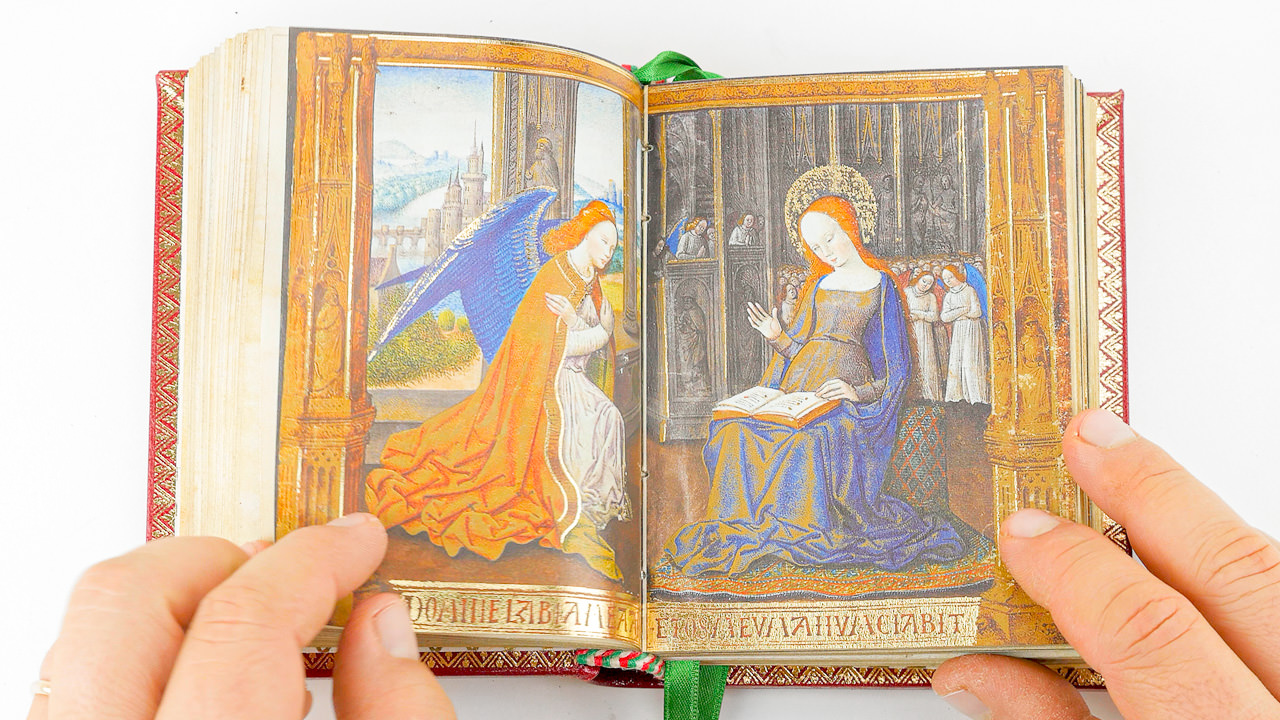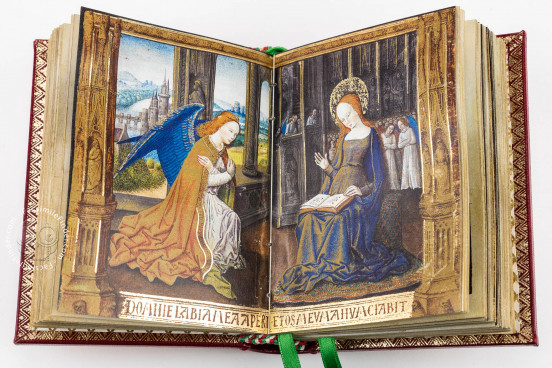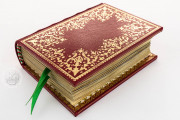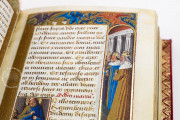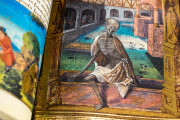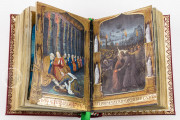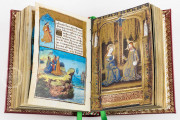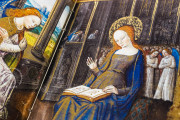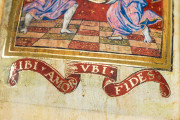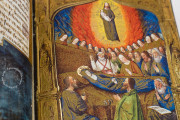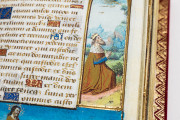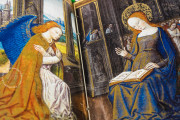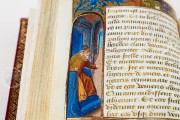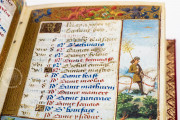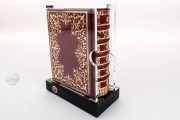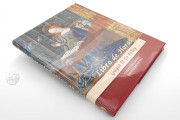The Hours of Guy Le Peley made an astonishing appearance on the art market in 2005 and constitutes a prominent addition to the corpus of the celebrated and prolific illuminator Jean Colombe. Created in the early 1480s in Bourges, the Hours of Guy Le Peley is a book of hours containing prayer services in Latin preceded by a calendar in French. Decorated with luxurious colors and abundant gold, it boasts sixteen historiated initials, three small miniatures, and fifteen full-page miniatures.
The exceptional feature of the manuscript is the pictorial content of the painted borders. A cycle of Old Testament scenes occupies the painted borders of hundreds of pages, and the calendar page borders also feature representations of the labors of the months and the signs of the zodiac.
A Magnum Opus of a Great Artist
Jean Colombe was a prominent artistic personality active in Bourges from 1463 to 1498, and his reputation and activity went far beyond his hometown. Colombe was appointed official illuminator to Charles I, Duke of Savoy (1468-1490), and completed the illustrious Très Riches Heures of the Duke of Berry left unfinished by the Limbourg brothers. Colombe's most famous manuscript is undoubtedly the colossal Hours of Louis de Laval, created over many years and involving the work of many collaborators. The Hours of Guy Le Peley with its ambitious decorative program no doubt also required the work of many assistants.
A Breathtakingly Extensive Decorative Program
The full-page miniatures introducing prayer services for the Virgin include scenes from the infancy of Christ and culminate with the Coronation of the Virgin (fol. 90r). Saint John on Patmos (fol. 14r) and scenes from Christ's Passion are also accorded full-page miniatures. Each full-page miniature has an elaborate painted architectural frame that incorporates a line or two of text at the bottom.
The lower borders of the text pages unveil a cycle of 283 narrative scenes extending from the Creation of Adam (fol. 1r) to King David's Repentance (fols. 149v-150r). The outer borders of 269 text pages include figures whose presence was inspired by the proximate text. The historiated initials contain portrait heads.
Rich Textual Content Elegantly Presented
The Hours of Guy Le Peley includes many of the customary texts of a contemporary book of hours. Remarkable is the inclusion of seasonal variants for the Office of the Virgin (fols. 19v-42r). Both the French text of the calendar—in blue, red, and gold—and the Latin text of the prayers are written in French Batârde, popular for both secular and sacred texts at the time.
Made for a Man of Considerable Means
The manuscript's patron, Guy II Le Peley, was in the salt trade in Troyes and rose to enough prominence to be able to purchase a coat of arms in 1473. This coat of arms is displayed in the book in the upper border of the first page (fol. 1r) and on a shield held by Gemini on one of the calendar pages for April (fol. 5v). His patronage of this manuscript alone attests to his wealth.
A Forgotten Masterpiece
Despite having been made for an identifiable patron and the work of a renowned artist, the manuscript was all but forgotten by modern history. It passed through many hands before finding its way into a public collection in the twenty-first century.
The manuscript found a place in the collections of Gaetano Poggiali (1753-1814) of Livorno and the ship-owner Henri Bordes (1842-1911) of Bordeaux. It was owned by Henri Gallice (1853-1930) of Épernay when it appeared in an exhibition of "French Primitives" in Paris in 1904. It entered the collection of the Médiathèque Jacques-Chirac in Troyes in 2005, thus finding its way "home."
We have 1 facsimile edition of the manuscript "Hours of Guy Le Peley": Libro de Horas de Le Peley facsimile edition, published by Orbis Mediaevalis, 2015
Request Info / Price
